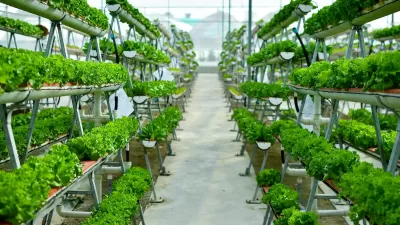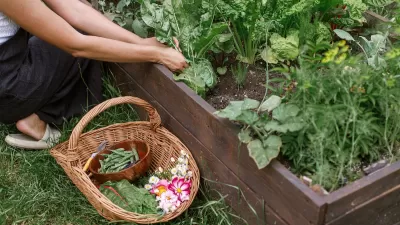The Mandan, Hidatsa, and Arikara Nation in North Dakota is launching a massive greenhouse project to regain their agricultural heritage and achieve food sovereignty.

The Mandan, Hidatsa, and Arikara Nation in North Dakota is revitalizing its agricultural roots through a substantial greenhouse complex, set to become one of the largest in the United States. As reported by Jack Dura, this initiative aims to grow leafy greens, tomatoes, and strawberries, allowing the tribe to achieve greater food sovereignty decades after their fertile lands were flooded by the construction of the Garrison Dam. The first phase of the project, costing $76 million, includes a 3.3-acre greenhouse and additional facilities, with plans to expand to 14.5 acres, significantly enhancing the tribe's capacity to produce fresh produce.
This greenhouse project is part of a broader movement to increase food sovereignty among Native American tribes, spurred by supply chain disruptions during the COVID-19 pandemic. By investing in local food systems, tribes across the nation are reclaiming their ability to feed their communities independently. The Mandan, Hidatsa, and Arikara Nation's greenhouse will support the Fort Berthold Indian Reservation's 8,300 residents and provide produce to other reservations and food banks in isolated areas. The operation is expected to create 30 to 35 jobs initially, with production goals of up to 15 million pounds of food annually.
A key element of this initiative is the use of natural gas resources from North Dakota's Bakken oil field. The tribe plans to capture and compress natural gas, traditionally flared off, to heat and power the greenhouse and produce fertilizer, addressing environmental concerns and reducing waste. This project not only reconnects the tribe with their agricultural heritage but also leverages modern resources to ensure sustainable and independent food production for the future.
FULL STORY: North Dakota tribe goes back to its roots with a massive greenhouse operation

Alabama: Trump Terminates Settlements for Black Communities Harmed By Raw Sewage
Trump deemed the landmark civil rights agreement “illegal DEI and environmental justice policy.”

Planetizen Federal Action Tracker
A weekly monitor of how Trump’s orders and actions are impacting planners and planning in America.

The 120 Year Old Tiny Home Villages That Sheltered San Francisco’s Earthquake Refugees
More than a century ago, San Francisco mobilized to house thousands of residents displaced by the 1906 earthquake. Could their strategy offer a model for the present?

In Both Crashes and Crime, Public Transportation is Far Safer than Driving
Contrary to popular assumptions, public transportation has far lower crash and crime rates than automobile travel. For safer communities, improve and encourage transit travel.

Report: Zoning Reforms Should Complement Nashville’s Ambitious Transit Plan
Without reform, restrictive zoning codes will limit the impact of the city’s planned transit expansion and could exclude some of the residents who depend on transit the most.

Judge Orders Release of Frozen IRA, IIJA Funding
The decision is a victory for environmental groups who charged that freezing funds for critical infrastructure and disaster response programs caused “real and irreparable harm” to communities.
Urban Design for Planners 1: Software Tools
This six-course series explores essential urban design concepts using open source software and equips planners with the tools they need to participate fully in the urban design process.
Planning for Universal Design
Learn the tools for implementing Universal Design in planning regulations.
Clanton & Associates, Inc.
Jessamine County Fiscal Court
Institute for Housing and Urban Development Studies (IHS)
City of Grandview
Harvard GSD Executive Education
Toledo-Lucas County Plan Commissions
Salt Lake City
NYU Wagner Graduate School of Public Service





























